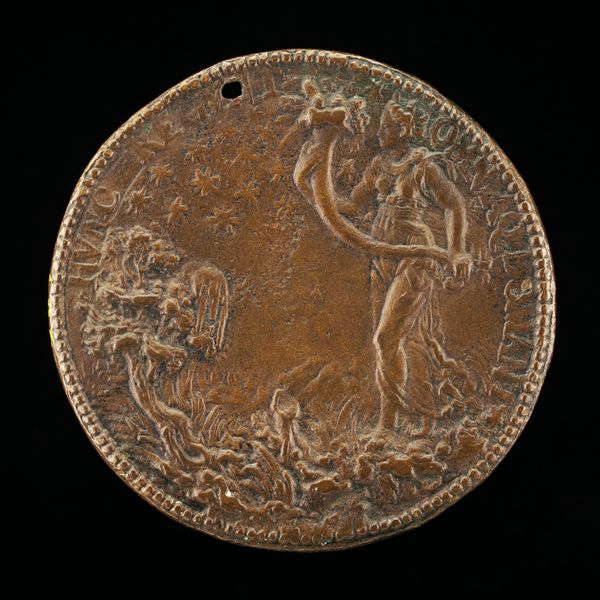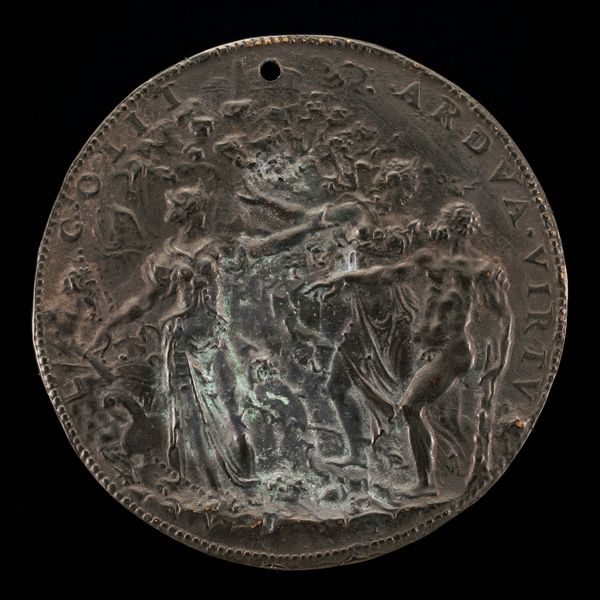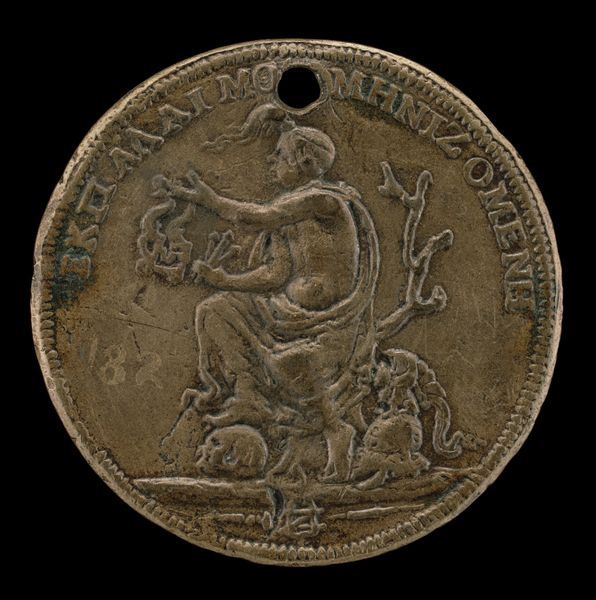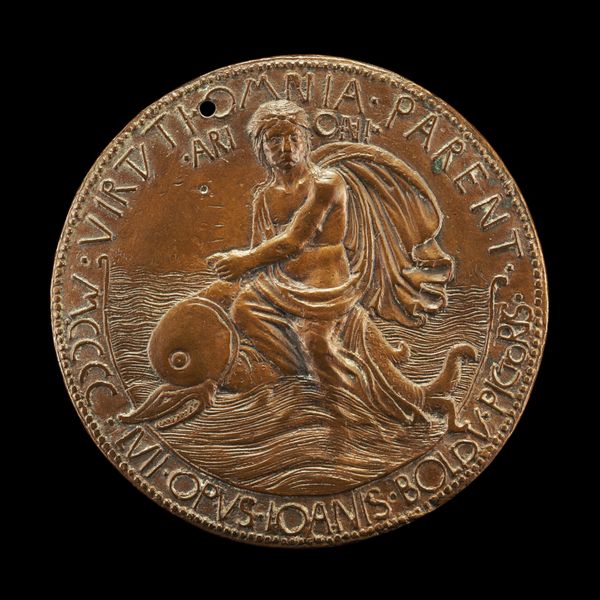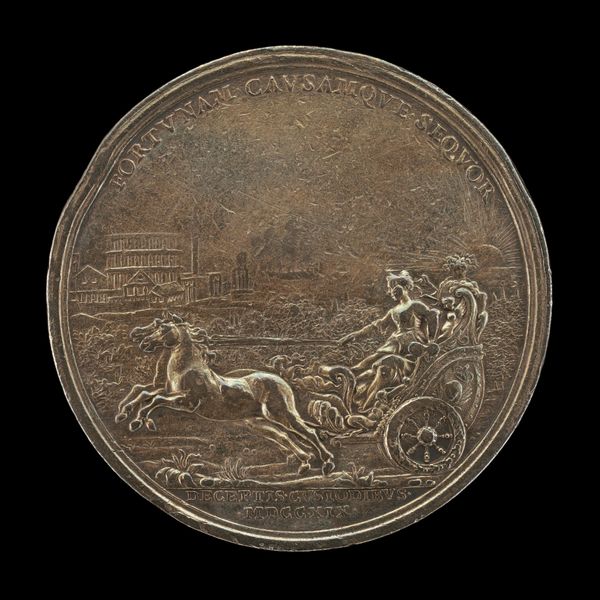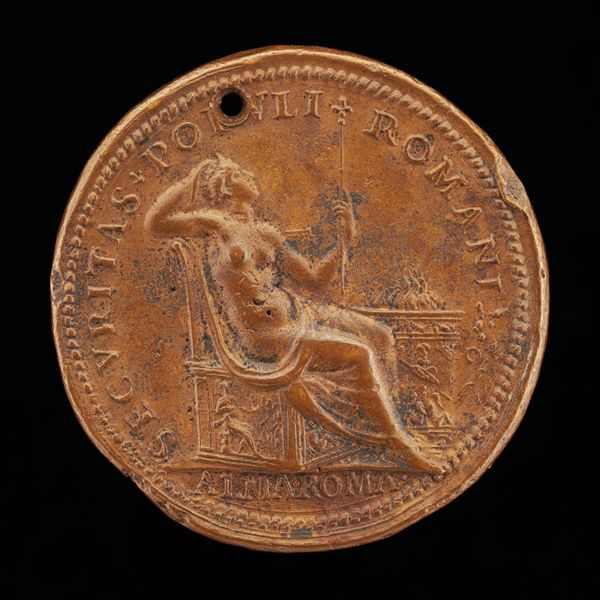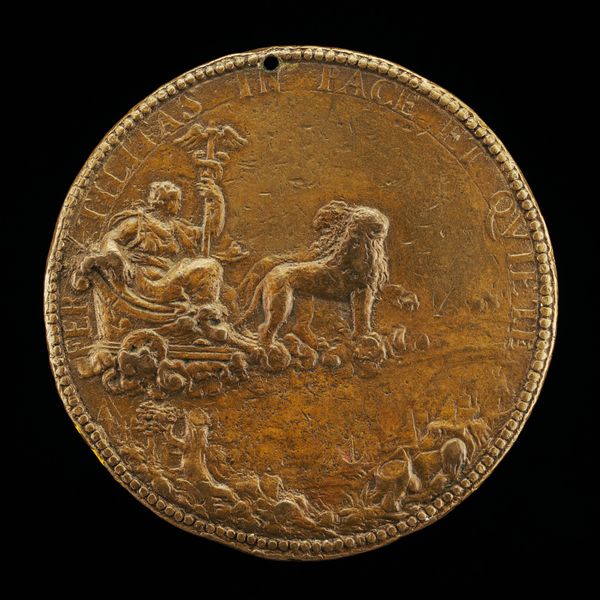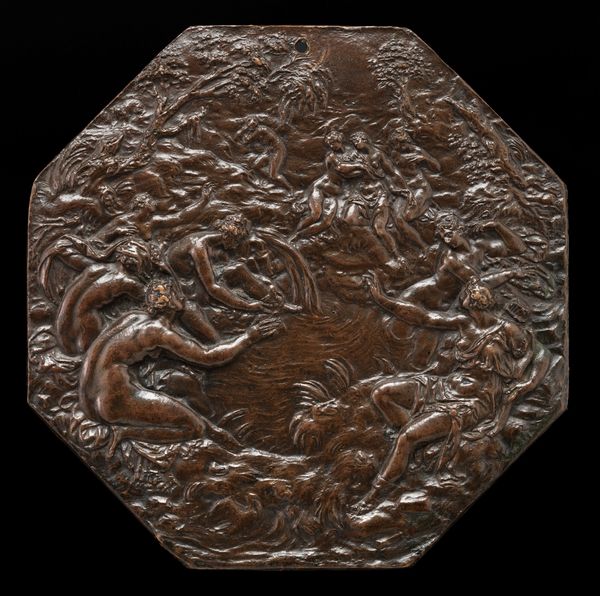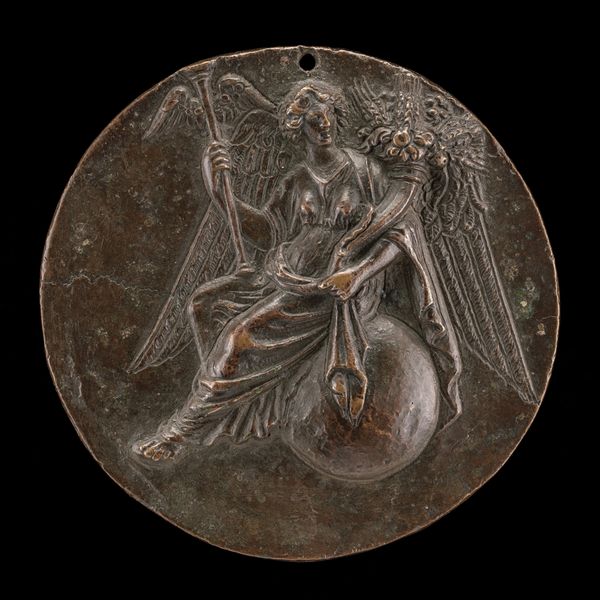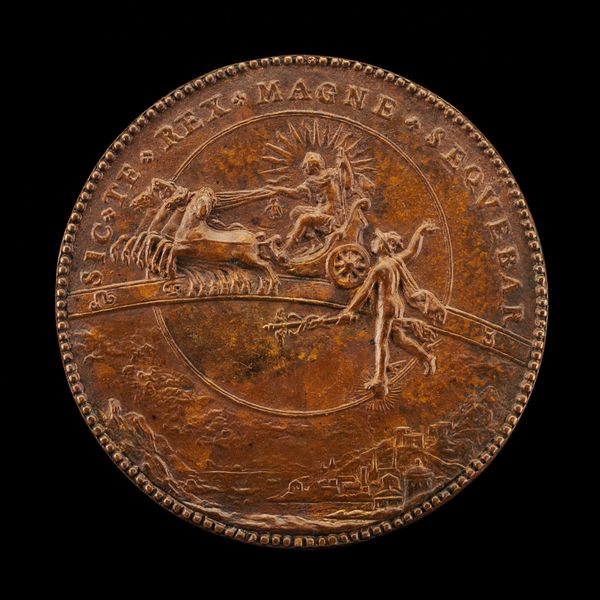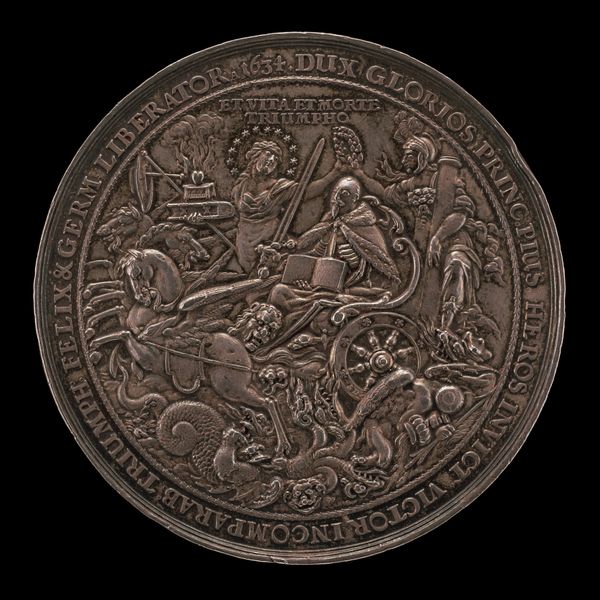![Griffin, Ducally Gorged, in a Landscape [reverse] by Bernardo Rantwyck](/_next/image?url=https%3A%2F%2Fd2w8kbdekdi1gv.cloudfront.net%2FeyJidWNrZXQiOiAiYXJ0ZXJhLWltYWdlcy1idWNrZXQiLCAia2V5IjogImFydHdvcmtzLzI4ODAwNjM2LTZmNDQtNDAwNi05OWEwLTBjNzRkOWJhZWRjOS8yODgwMDYzNi02ZjQ0LTQwMDYtOTlhMC0wYzc0ZDliYWVkYzlfZnVsbC5qcGciLCAiZWRpdHMiOiB7InJlc2l6ZSI6IHsid2lkdGgiOiAxOTIwLCAiaGVpZ2h0IjogMTkyMCwgImZpdCI6ICJpbnNpZGUifX19&w=3840&q=75)
Griffin, Ducally Gorged, in a Landscape [reverse] after 1577
0:00
0:00
relief, bronze, sculpture
#
stone
#
sculpture
#
relief
#
bronze
#
11_renaissance
#
sculpture
Dimensions: overall (diameter): 7.03 cm (2 3/4 in.) gross weight: 134.51 gr (0.297 lb.) axis: 12:00
Copyright: National Gallery of Art: CC0 1.0
Editor: Here we have a bronze relief sculpture from after 1577 by Bernardo Rantwyck, titled "Griffin, Ducally Gorged, in a Landscape [reverse]". The circular shape and patinated bronze give it an ancient, almost talismanic quality. What stands out to you most when you look at this piece? Curator: For me, this piece is steeped in the visual language of power and privilege in the Renaissance. Consider the griffin, a hybrid creature, often associated with guardianship and strength. Its “ducal gorging” – wearing a ducal crown – speaks directly to aristocratic authority. How does Rantwyck use this imagery to engage with ideas of hierarchy and legitimacy in his time? Do you think there's perhaps an intent to legitimize power? Editor: I hadn’t thought about it that way. The landscape seems almost secondary to the griffin. Is the setting important in this context? Curator: Absolutely. The landscape grounds the griffin in a specific territory. We should ask ourselves, whose land is being symbolically claimed here? Renaissance art was often deeply entwined with political messaging. We must decode not just the mythological creature but also the context within which that image circulates. Consider its patronage: Who commissioned this, and what statement were they trying to make about their lineage or dominion? It appears to have a hole, so was it some sort of pendant or badge? Editor: So, understanding the political and social environment of the time is crucial to interpreting this image. Curator: Precisely. The artwork serves as a tangible artifact of a complex power dynamic. Understanding these forces at play really enriches the experience. Editor: It’s fascinating how a simple image can be such a potent statement about power and authority. Curator: Indeed. Analyzing it through the lens of history and politics allows us to engage with a deeper narrative and understand not just what it represents but why it matters.
Comments
No comments
Be the first to comment and join the conversation on the ultimate creative platform.
